Damasquinado (Toledo Craft) can be found in many shops in Toledo Spain. While in Toledo, we were “pulled” (seduced) into a workshop where the ancient craft of Damascene is practised. We literally had just checked into our hotel, dropped our bags in the room and headed out to grab a bite to eat. We walked a few steps when I felt a few raindrops hit my head. Of course the umbrellas were in our room but my husband volunteered (aka- was forced) to run back and grab them. I walked on taking photos as I moved down the road. All of sudden a man ran up to me and said “You must follow me. It is very beautiful and important.” I did what any woman of a certain age would do…I started to follow him…slowly. He moved down the street and was now herding a group of people toward a building. Hubby caught up with me and I explained what the man said. He asked me what it was and I said I didn’t know but I think we should check it out. We approached the building and I started to take some photos. The gentleman came up and told me to hurry…”don’t waste time taking pictures.” I took a few more before we walked in.
At this point I wasn’t sure what was down the hall but I knew “it was very beautiful and important.” Count me in (hubby too)! We walked down the hall into a workshop filled with light and energy. Nothing fancy, nothing over the top. It was functional. My kind of workspace.
To appreciate the art of Damasquinado let me give you some background on this ancient art. In the Middle Ages Toledo was called the land of three cultures. This was a period when Christians, Jews, and Muslims were able to live side by side culturally and religiously. While Damascene came to Toledo from Damascus. the other cultures embraced it. Traditionally, the craft was passed through the family but times have changed that. The artisans in the shop we visited were diverse. The designs they produce are the traditional designs however.
Damascene is the inlaying of gold, silver, or copper threads into a base of oxidized steel or other metal (tin). The patterns are etched into the metal and the thread (so thin it is barely visible) is worked into the rough edges. There are two types of patterns- Renaissance (flowers and birds) and Arabesque (geometric designs). I would have loved to try my hand at Damasquinado keeping in mind that it takes ten years for an apprentice to become a Master Craftsmen. If we move to Toledo…this could
be a new calling.
This young man was so focused on the task at hand. Very talented as they all were.
We watched and chatted for awhile and then I explained we needed to leave because we were starving. The gentleman that “herded” us into the workroom (with a shop connected, of course) was disappointed. I told him we would be back. I don’t think he believed me. Several hours later when we walked back into the shop, he gave us a thumbs up and a huge smile. Did we buy anything? I’ll let you decide.

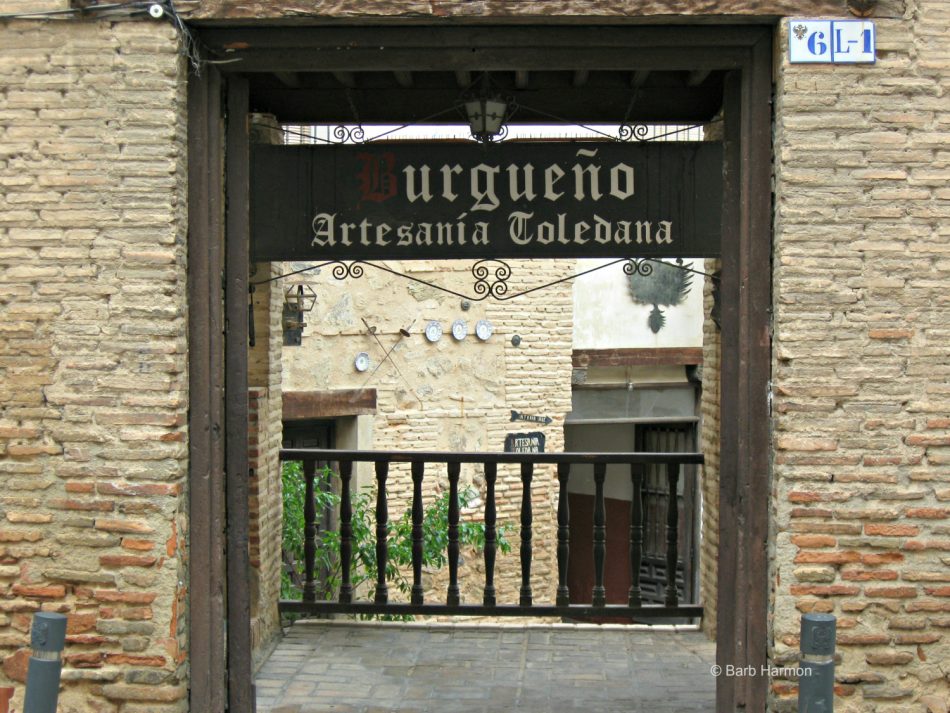
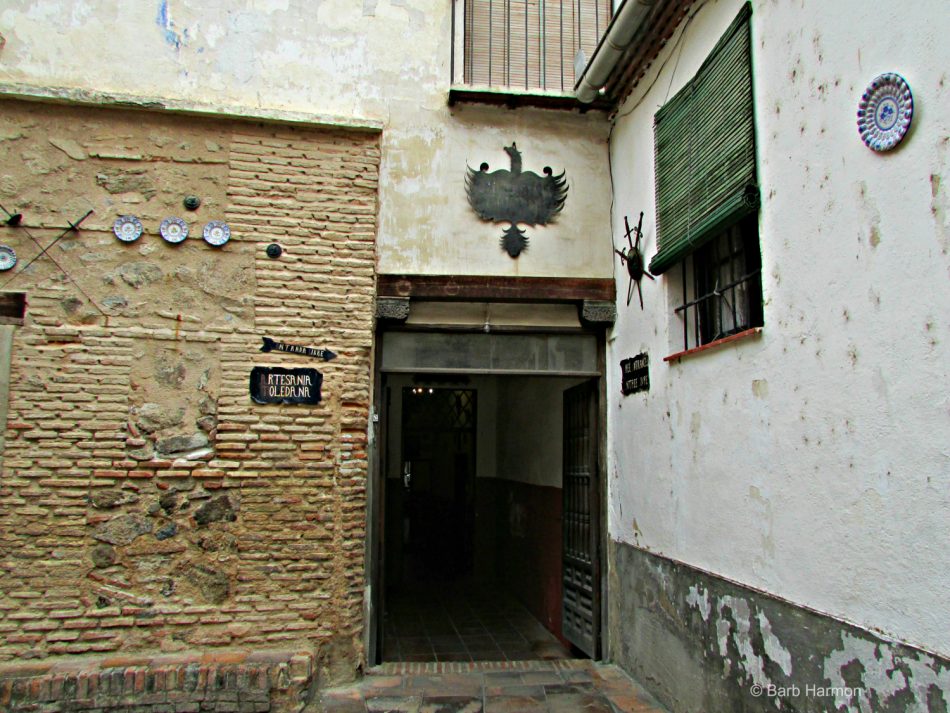
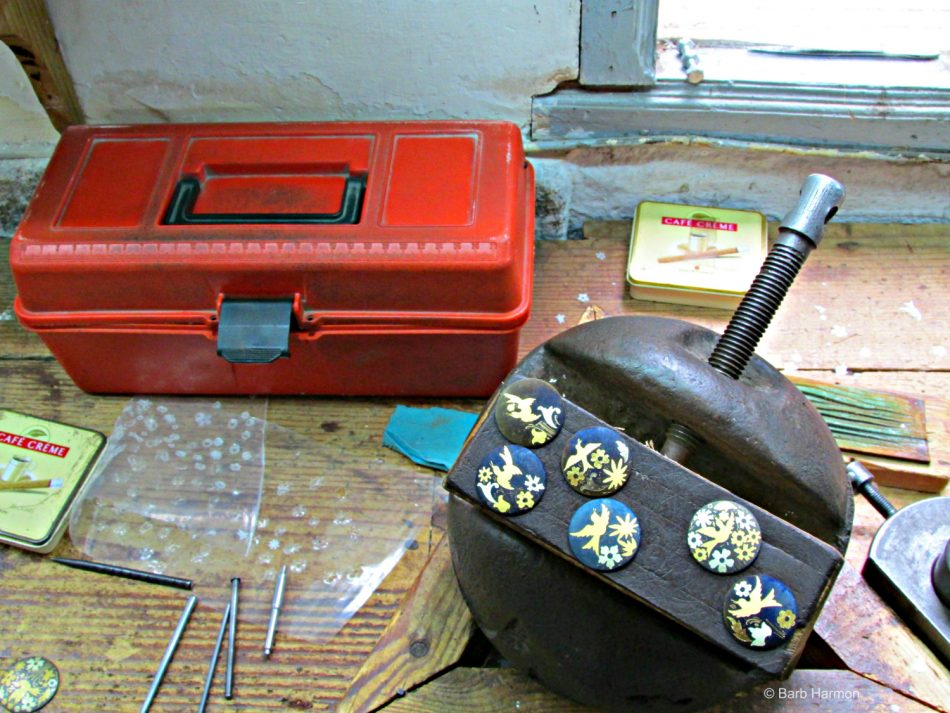


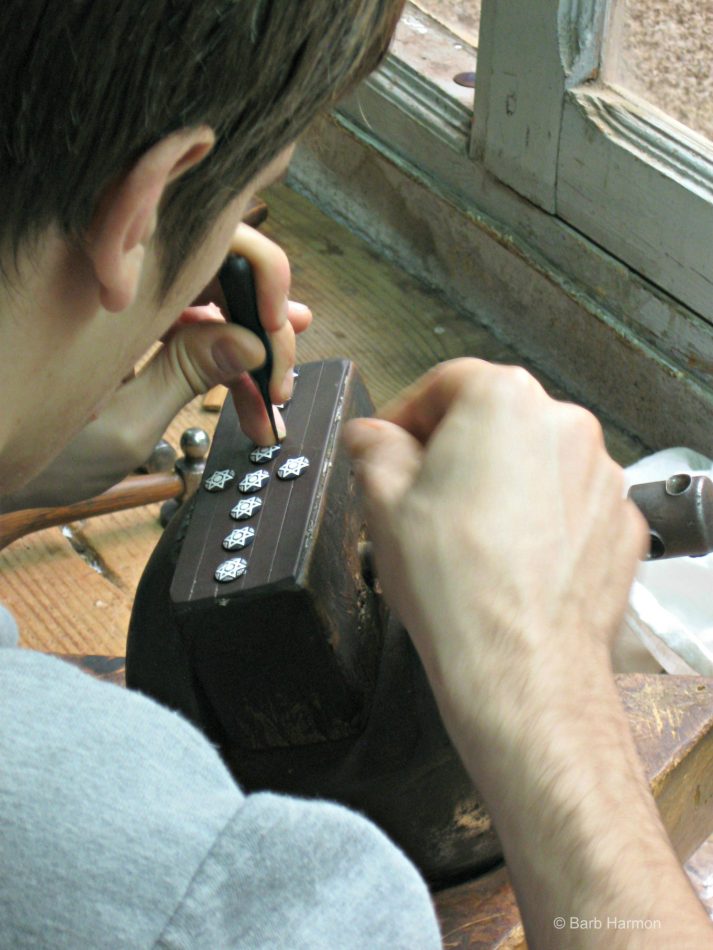
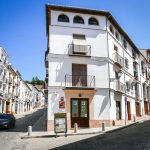
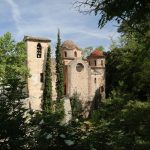




Leave a Reply